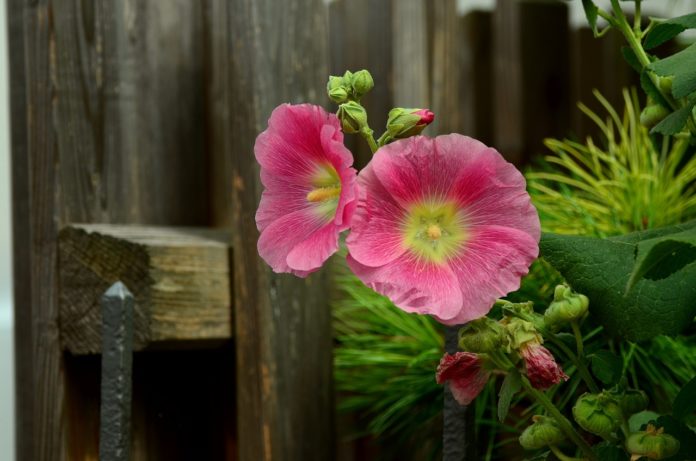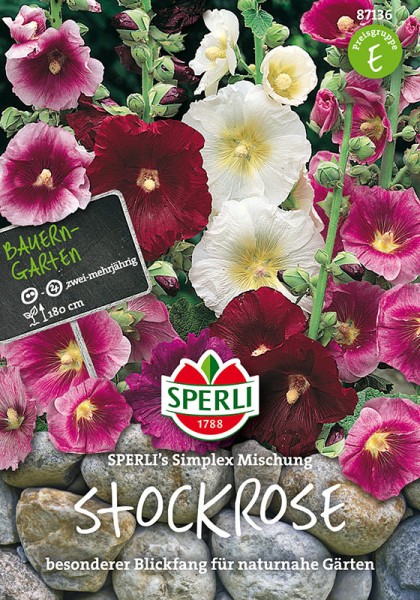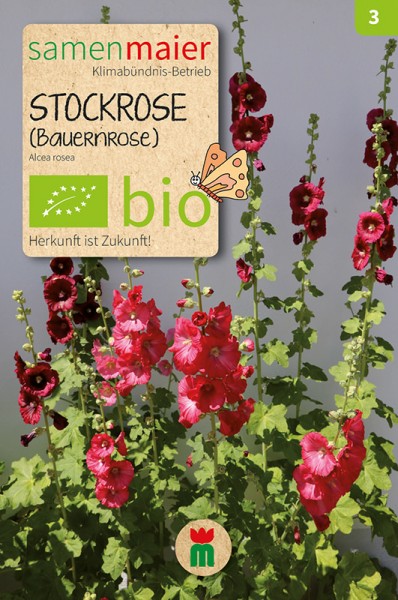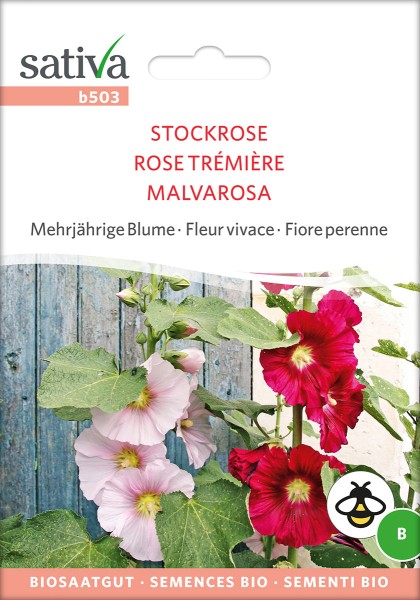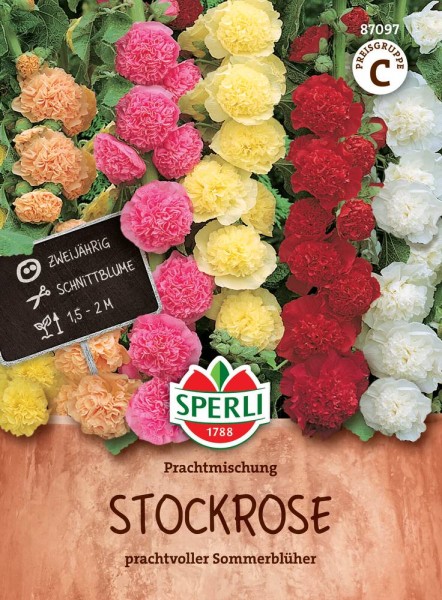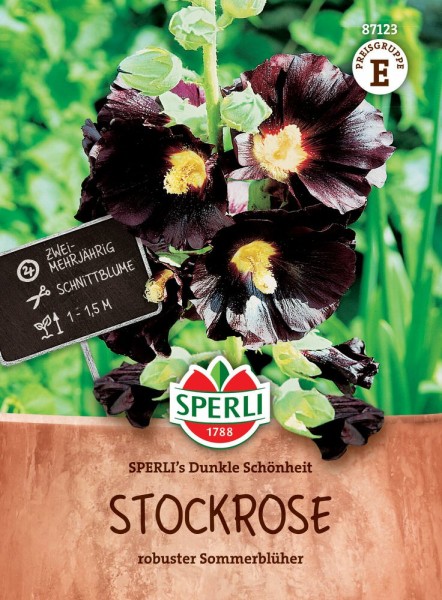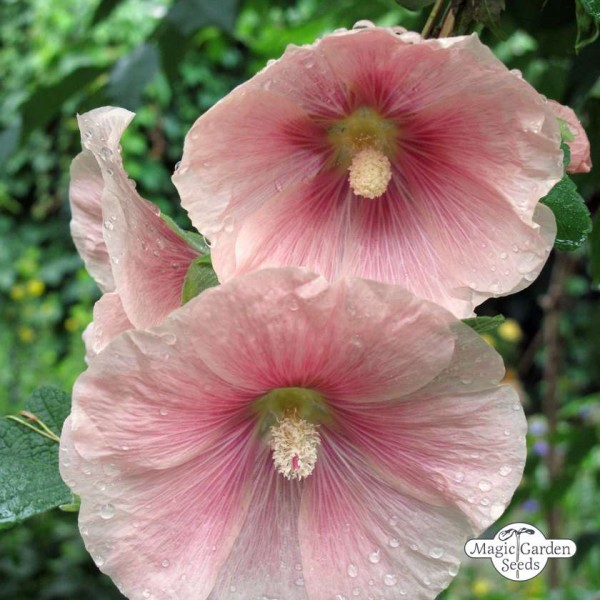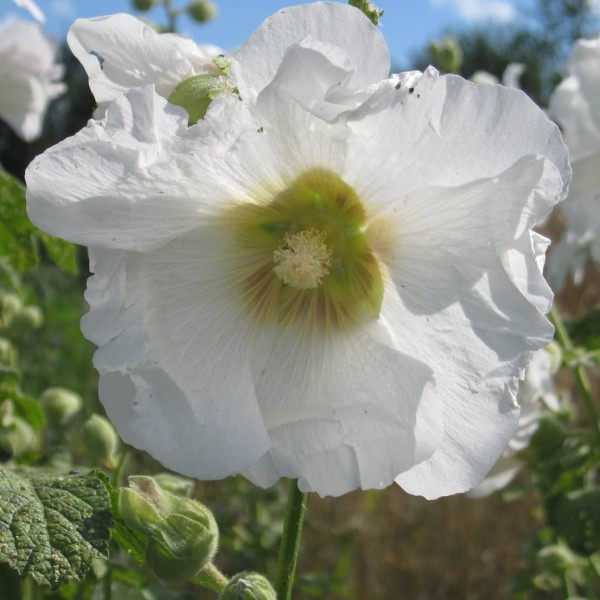Stock roses have earned their place as traditional ornamental plants in the farmer’s garden. They are considered easy to care for, flower beautifully in summer, and are great havens for bees. This is why they should not be missing in your garden.
Stock Rose Varieties
Stock roses (Alcea) belong to the mallow family. There are about 60 different species. The best known is the common hollyhock (Alcea rosea). In some areas it is also known as mallow, farm rose, or farm mallow. Originally, the hollyhock comes from the Mediterranean area,however, it has become so acclimated here for many centuries, under optimal conditions it can grow up to three meters high!
Stock roses bloom in different colors. Red, pink, or white flowering varieties are by far the most widespread. They are also available with yellowish, purple, or almost black flowers. We prefer to plant a colorful mixture. The cup-shaped flowers can be filled or unfilled. Breeds with double flowers are by far the most attractive in the bed, but if you want to benefit bees and bumble bees, you should sow simple hive mallows with unfilled flowers.
Sowing and Nurturing Hollyhocks
Stock roses have deep roots and resist being moved. It is therefore best to plant them outdoors. Spring and early summer (April to June, depending on weather conditions) as well as late summer (August and September) are considered suitable times for sowing.
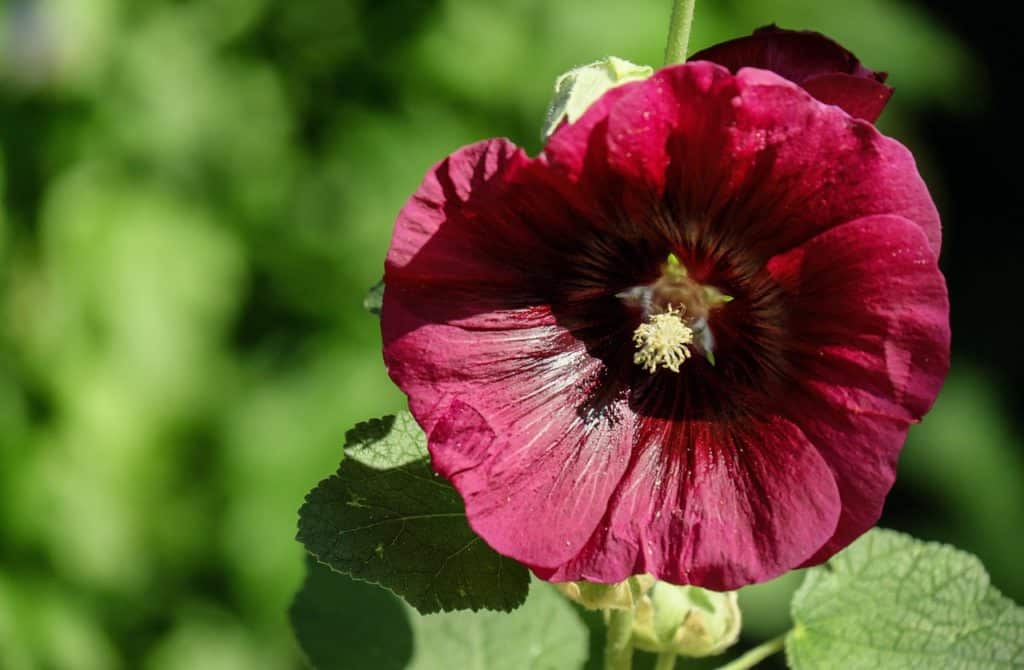
Stock roses belong to the dark germ family. Cover the seeds with a good two centimetres of soil. Sow them at a distance of at least 40 centimetres into the bed. Stock mallows grow not only in height, but also in width. If they are planted too closely together, they are susceptible to mallow rust. A word of caution: the plant only forms a rosette of leaves in the first year and does not flower until the second year! Stock mallow can also be nurtured from February on the windowsill or in the greenhouse. Place the seeds two centimetres deep in growing pots and place them in a warm place: the seeds need temperatures around 20 degrees Celsius to germinate. The germination period can be up to 30 days. As soon as the plants have formed two leaves, you should put them outdoors.
Care and Location
Stock roses thrive best in a sunny, warm, and sheltered location. A sheltered place on the south side of a building is ideal: the house wall radiates heat and protects them against wind. The soil should be permeable, nutrient-rich, and slightly damp. Thanks to their long roots, hollyhock mallows can cope with short dry periods, but usually need regular moisture. Regular watering and a mulch layers prevent the soil from drying out too quickly.
Stock roses are biennial to perennial plants: in the first year they only form a rosette of leaves. Only in the second year do they grow upwards and bloom from July to September. Since their weight and the wind can easily cause them to twist, you should tie the plants down. The more nitrogen there is in the soil, the larger the leaves and flowers will become, so you should fertilise the plants regularly.
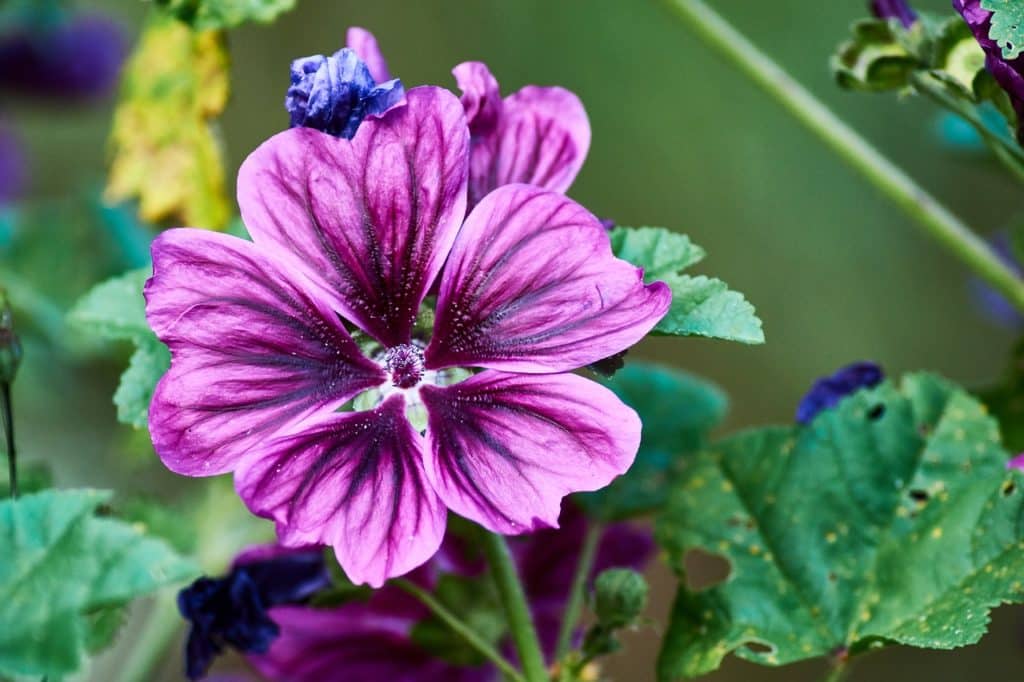
To ensure that the perennial plant sprouts vigorously in the following year, cut it back to the lowest leaves after it flowers. Otherwise, it may be that it will spend so much time flowering and forming seeds that it won’t come back. Of course, you can also make the hollyhock seed and plant it. Make sure, however, that you isolate the young plants in the following spring. With the flowers, you might experience a surprise; stock roses cross easily, so that the following generation sometimes blooms in completely different colours than their parents. In addition to snails and aphids, mallow rust can be a big problem – especially if the plants are too dense.
Harvesting and Use
Stock roses aren‘t purely ornamental plants in the garden. Due to their strong colouring properties, dried petals were once used to colour food, Easter eggs, textiles, wool and yarns. Varieties with dark flowers are especially suitable for dyes. In addition, the hollyhock is considered a medicinal plant. A tea made from dried leaves is said to help with coughing, among other ailments.

